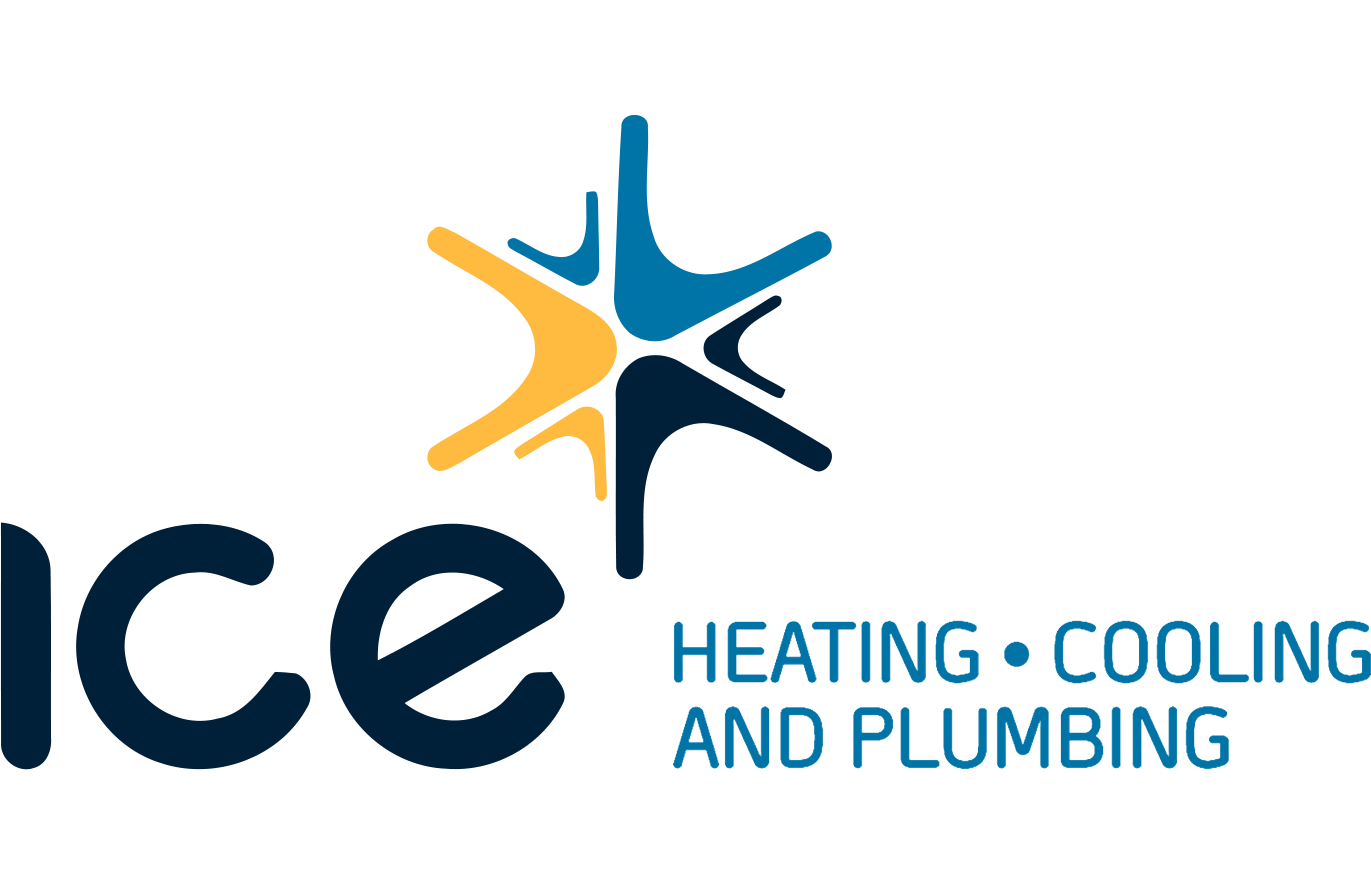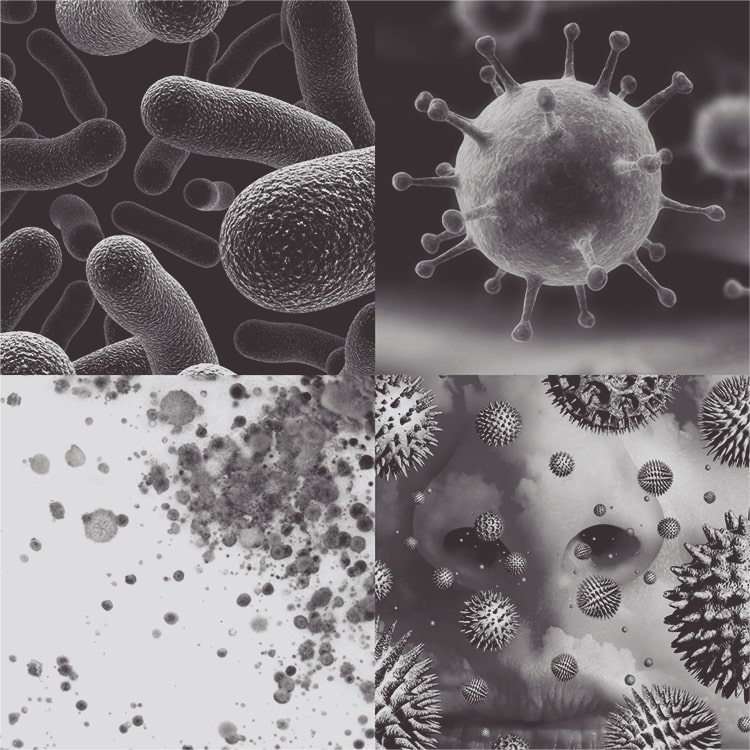At ICE Heating & Cooling, we understand the importance of your family’s health, so we created this blog to help you with such a sensitive matter.
There are different ways to measure how well air cleaning devices work, which depend on the type of device and the basic configuration. Air cleaning devices are configured either in the ductwork of HVAC systems (i.e., in-duct) or as portable air cleaners. ( portable air cleaners are limited to one area, will have to be replaced every so often, are hard to clean and maintain, and can be pricey )
In-duct Particle Removal
Most mechanical air filters are good at capturing larger airborne particles, such as dust, pollen, dust mite, cockroach allergens, some molds, and animal dander. However, because these particles settle rather quickly, air filters are not very good at removing them completely from indoor areas. Although human activities such as walking and vacuuming can stir up particles, most of the larger particles will resettle before an air filter can remove them.
Consumers can select a particle removal air filter by looking at its efficiency in removing airborne particles from the air stream that passes through it. This efficiency is measured by the minimum efficiency reporting value (MERV) for air filters installed in the ductwork of HVAC systems. The American Society of Heating, Refrigerating, and Air-Conditioning Engineers, or ASHRAE developed this measurement method. MERV ratings (ranging from a low of 1 to a high of 20) also allow comparison of air filters made by different companies.
Filters with a MERV between 7 and 13 are likely to be nearly as effective as true HEPA filters.
- Flat or panel air filters with a MERV of 1 to 4 are commonly used in residential furnaces and air conditioners. For the most part, such filters are used to protect the HVAC equipment from the buildup of unwanted materials on the surfaces such as fan motors and heating or cooling coils, and not for direct indoor air quality reasons. They have low efficiency on smaller airborne particles and medium efficiency on larger particles, as long as they remain airborne and pass through the filter.
Some smaller particles found within a house include:
- viruses
- bacteria
- some mold spores
- a significant fraction of cat and dog allergens
- a small portion of dust mite allergens
Pleated or extended surface filters
- Medium efficiency filters with a MERV of 5 to 13 are reasonably efficient at removing small to large airborne particles. Filters with a MERV between 7 and 13 are likely to be nearly as effective as true HEPA filters at controlling most airborne indoor particles. Medium-efficiency air filters are generally less expensive than HEPA filters and allow quieter HVAC fan operation and higher airflow rates than HEPA filters since they have less airflow resistance.
- Higher efficiency filters with a MERV of 14 to 16, sometimes misidentified as HEPA filters, are similar in appearance to true HEPA filters, which have MERV values of 17 to 20. True HEPA filters are normally not installed in residential HVAC systems; installation of a HEPA filter in an existing HVAC system would probably require professional modification of the system. A typical residential air handling unit and the associated ductwork would not be able to accommodate such filters because of their physical dimensions and increase in airflow resistance.
Some residential HVAC systems may not have enough fan or motor capacity to accommodate higher-efficiency filters. Therefore, the HVAC manufacturer’s information should be checked prior to upgrading filters to determine whether it is feasible to use more efficient filters. Specially built high-performance homes may occasionally be equipped with true HEPA filters installed in a properly designed HVAC system.
There is no standard measurement for the effectiveness of electronic air cleaners. While they may remove small particles, they may be ineffective in removing large particles. Electronic air cleaners can produce ozone — a lung irritant. The amount of ozone produced varies among models. Electronic air cleaners may also produce ultrafine particles resulting from the reaction of ozone with indoor chemicals such as those coming from household cleaning products, air fresheners, certain paints, wood flooring, or carpets. Ultrafine particles may be linked with adverse health effects in some sensitive populations.
In-duct Gaseous Pollutant Removal
Although there is no standard measurement for the effectiveness of gas-phase air filters, ASHRAE is developing a standard method to be used in choosing gas-phase filters installed in home HVAC systems. Gas-phase filters are much less commonly used in homes than particle air filters. The useful lifetime of gas-phase filters can be short because the filter material can quickly become overloaded and may need to be replaced often. There is also concern that, when full, these filters may release trapped pollutants back into the air. Finally, a properly designed and built gas-phase filtration system would be unlikely to fit in a typical home HVAC system or a portable air cleaner.
In-duct Pollutant Destruction
UVGI cleaners may not reduce allergy or asthma symptoms.
There is no standard measurement for the effectiveness of UVGI cleaners. Typical UVGI cleaners used in homes have limited effectiveness in killing bacteria and molds. Effective destruction of some viruses and most mold and bacterial spores usually requires much higher UV exposure than is provided in a typical home unit. Furthermore, dead mold spores can still produce allergic reactions, so UVGI cleaners may not be effective in reducing allergy and asthma symptoms.
There is no standard measurement for the effectiveness of PCO cleaners. The use of PCO cleaners in homes is limited because currently available catalysts are ineffective in destroying gaseous pollutants from indoor air. Some PCO cleaners fail to destroy pollutants completely and instead produce new indoor pollutants that may cause irritation of the eyes, throat, and nose.
Will Air Cleaning Reduce Adverse Health Effects?
The ability to remove particles, including microorganisms, is not, in itself, an indication of the ability of an air cleaning device to reduce adverse health effects from indoor pollutants. The use of air cleaning devices may help to reduce levels of smaller airborne allergens or particles. However, air cleaners may not reduce adverse health effects completely in a sensitive population such as children, the elderly, and people with asthma and allergies.
For example, the evidence is weak that air cleaning devices are effective in reducing asthma symptoms associated with small particles that remain in the air, such as those from some airborne cat dander and dust mite allergens. Larger particles, which may contain allergens, settle rapidly before they can be removed by filtration, so effective allergen control measures require washing sheets weekly, frequent vacuuming of carpets and furniture, and dusting and cleaning of hard surfaces.
There are no studies to date linking gas-phase filtration, UVGI, and PCO systems in homes to reduced health symptoms in sensitive populations.
Additional Factors to Consider
When making decisions about using air cleaning devices, consumers should also consider:
- Installation: In-duct air cleaning devices have certain installation requirements that must be met, such as sufficient access for inspection during use, repairs, or maintenance.
- Major Costs: These include the initial purchase, maintenance (such as cleaning or replacing filters and parts), and operation (such as electricity).
- Odors: Air cleaning devices designed for particle removal are incapable of controlling gases and some odors. The odor and many of the carcinogenic gas-phase pollutants from tobacco smoke will still remain.
- Soiling of Walls and Other Surfaces: Ion generators generally are not designed to remove the charged particles that they generate from the air. These charged particles may deposit on room surfaces, soiling walls, and other surfaces.
- Noise: Noise may be a problem with portable air cleaners containing a fan. Portable air cleaners without a fan are typically much less effective than units with a fan.
Conclusion
Indoor air pollution is among the top five environmental health risks. The best way to address this risk is to control or eliminate the sources of pollutants, and to ventilate a home with clean outdoor air. The ventilation method may, however, be limited by weather conditions or undesirable levels of contaminants in outdoor air. If these measures are insufficient, an air-cleaning device may be useful.
While air cleaning devices may help to control the levels of airborne allergens, particles, or, in some cases, gaseous pollutants in a home, they may not decrease adverse health effects from indoor air pollutants.
Contact ICE Heating & Cooling For Enhancing Indoor Air Quality
Bring comfort to your home with our expert advice. Whether you’re wondering How To Choose A Thermostat, or, Is Your Home At The Right Temperature For Your Dog Or Cat, we have solutions for you with our professional indoor air quality services.



